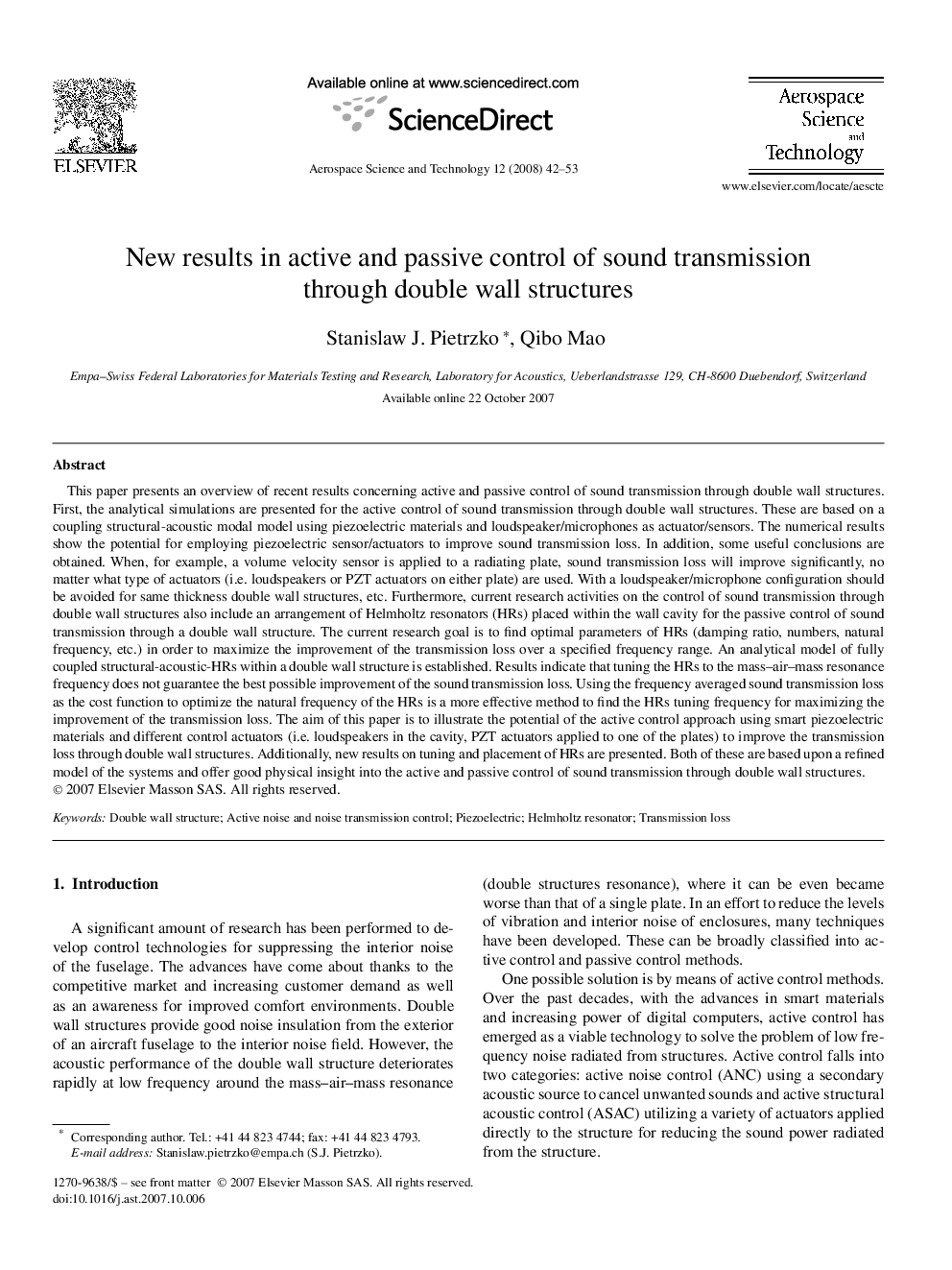| Article ID | Journal | Published Year | Pages | File Type |
|---|---|---|---|---|
| 1718907 | Aerospace Science and Technology | 2008 | 12 Pages |
This paper presents an overview of recent results concerning active and passive control of sound transmission through double wall structures. First, the analytical simulations are presented for the active control of sound transmission through double wall structures. These are based on a coupling structural-acoustic modal model using piezoelectric materials and loudspeaker/microphones as actuator/sensors. The numerical results show the potential for employing piezoelectric sensor/actuators to improve sound transmission loss. In addition, some useful conclusions are obtained. When, for example, a volume velocity sensor is applied to a radiating plate, sound transmission loss will improve significantly, no matter what type of actuators (i.e. loudspeakers or PZT actuators on either plate) are used. With a loudspeaker/microphone configuration should be avoided for same thickness double wall structures, etc. Furthermore, current research activities on the control of sound transmission through double wall structures also include an arrangement of Helmholtz resonators (HRs) placed within the wall cavity for the passive control of sound transmission through a double wall structure. The current research goal is to find optimal parameters of HRs (damping ratio, numbers, natural frequency, etc.) in order to maximize the improvement of the transmission loss over a specified frequency range. An analytical model of fully coupled structural-acoustic-HRs within a double wall structure is established. Results indicate that tuning the HRs to the mass–air–mass resonance frequency does not guarantee the best possible improvement of the sound transmission loss. Using the frequency averaged sound transmission loss as the cost function to optimize the natural frequency of the HRs is a more effective method to find the HRs tuning frequency for maximizing the improvement of the transmission loss. The aim of this paper is to illustrate the potential of the active control approach using smart piezoelectric materials and different control actuators (i.e. loudspeakers in the cavity, PZT actuators applied to one of the plates) to improve the transmission loss through double wall structures. Additionally, new results on tuning and placement of HRs are presented. Both of these are based upon a refined model of the systems and offer good physical insight into the active and passive control of sound transmission through double wall structures.
